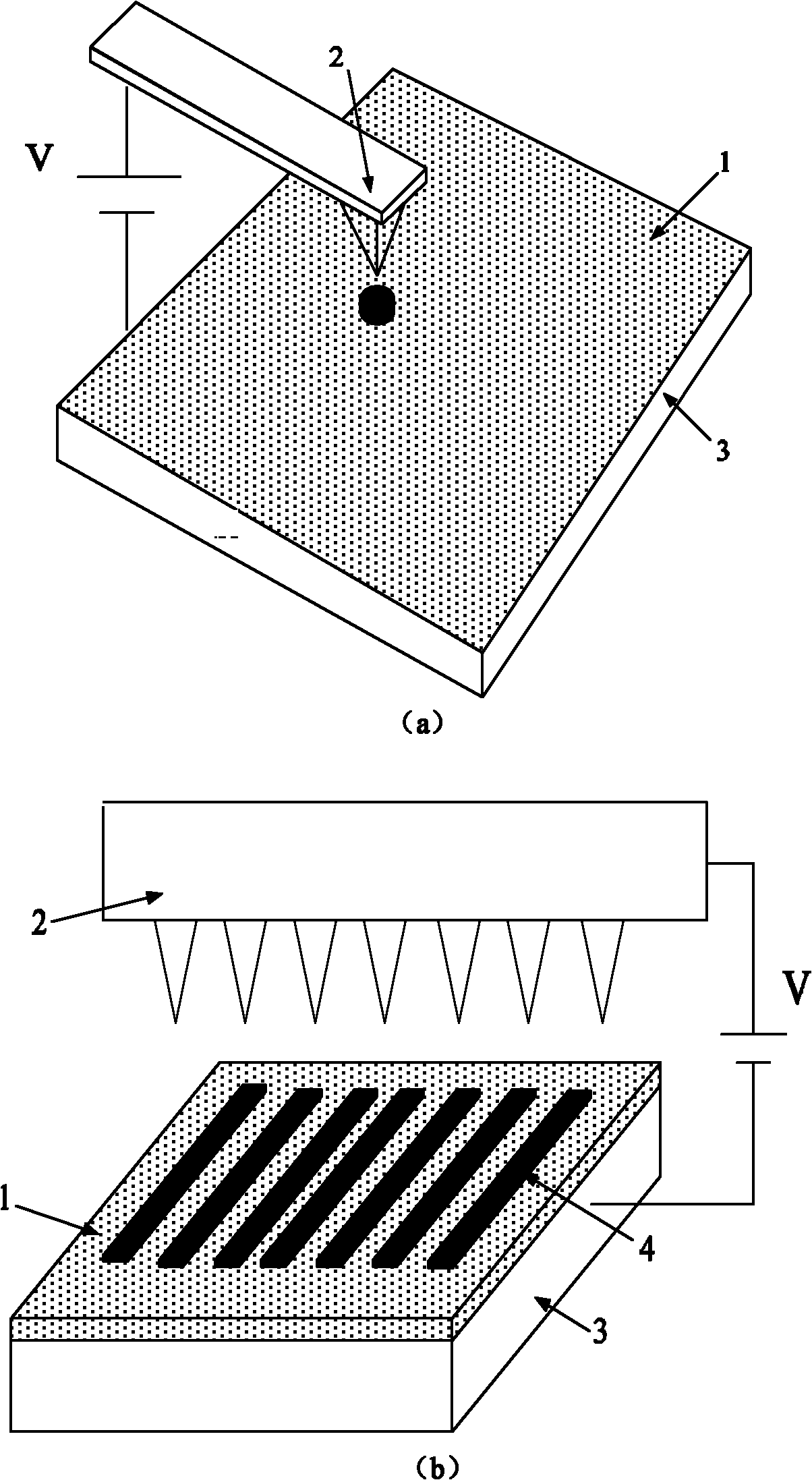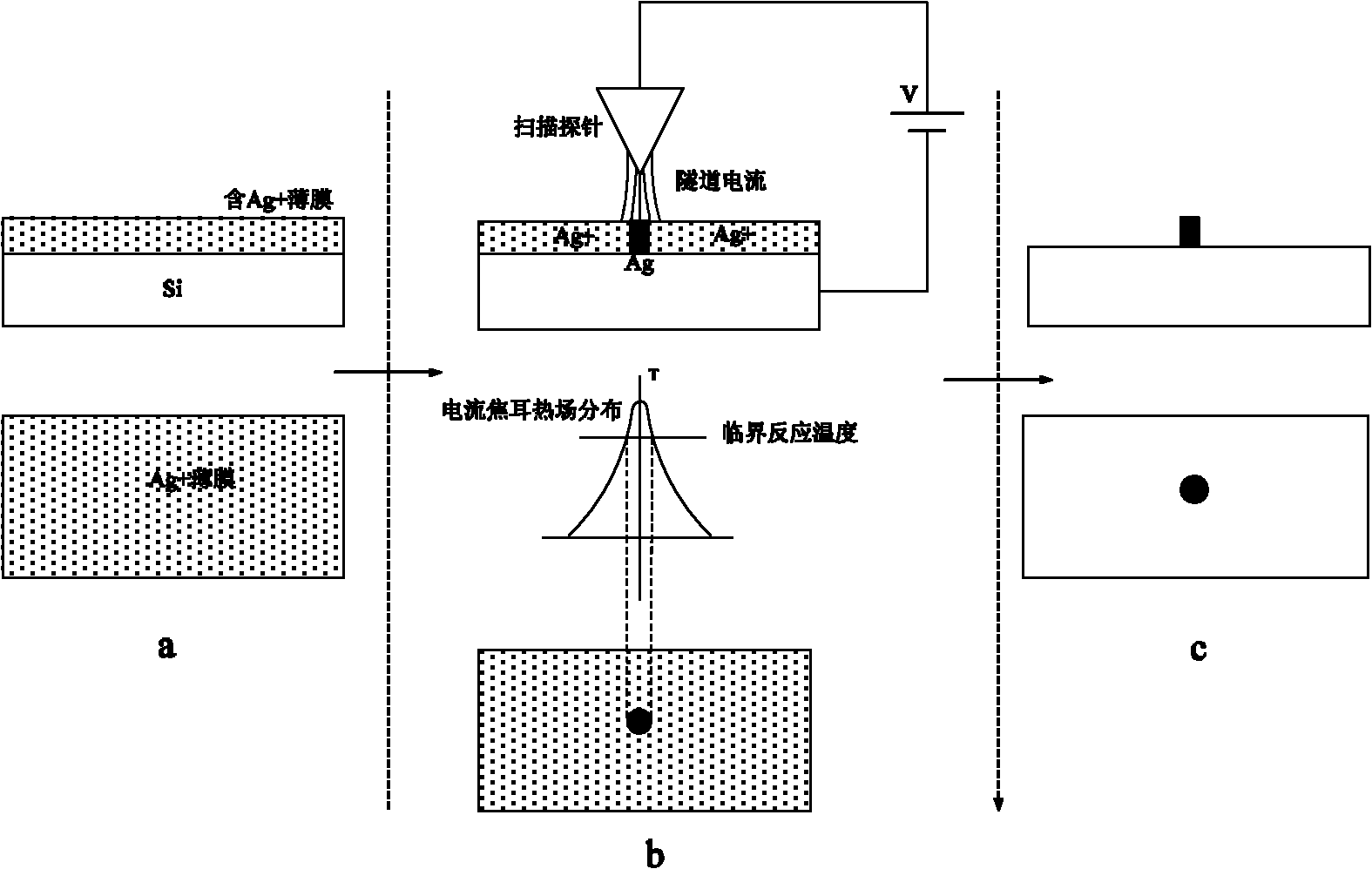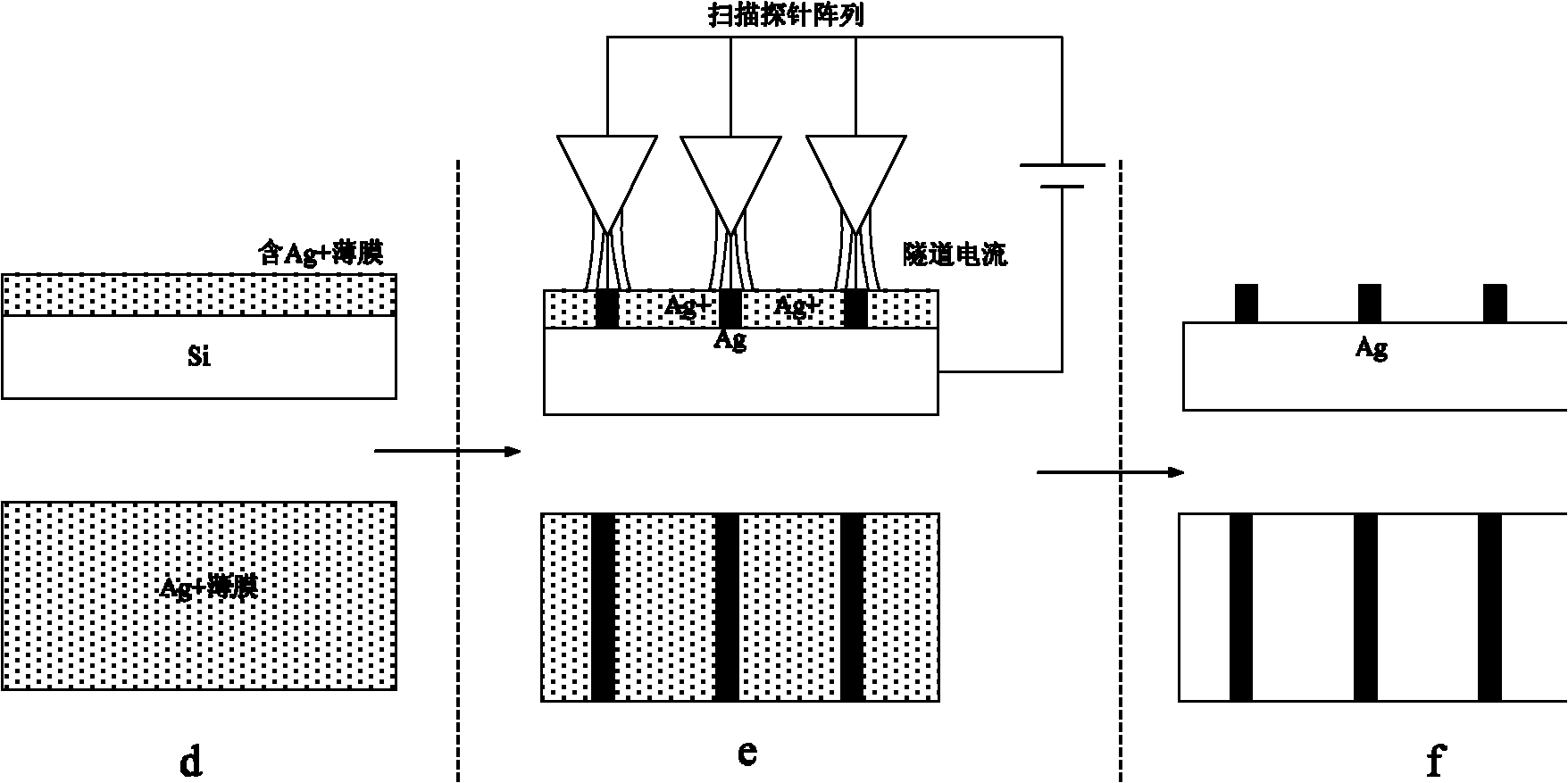Direct writing method for in situ reduction metal nano-structure
A metal nanostructure and in-situ technology, which is applied in the field of in-situ reduction of metal nanostructures and direct writing of in-situ reduction of metal nanostructures, can solve the problems of high cost, low efficiency, and few types of materials, and achieve high repeatable manufacturing accuracy , simple process and high manufacturing efficiency
- Summary
- Abstract
- Description
- Claims
- Application Information
AI Technical Summary
Problems solved by technology
Method used
Image
Examples
Embodiment 2
[0019] Example 2: AgNO with a mass ratio of 85:11 3 and CH 3 CHO was dissolved in ammonia water to make a mixed solution with a concentration of 252g / L, and a quartz plate was selected as the base material 3, and the prepared AgNO 3 with CH 3 The ammonia solution of CHO is coated on the surface of the substrate to form a mixed solution film 1 with a thickness of 200nm; the scanning voltage of the STM scanning tunneling microscope is 10V, the electric pulse frequency is 100Hz, and the speed of the scanning probe 2 is 80nm / s.
Embodiment 3
[0020] Example 3: AgNO with a mass ratio of 85:11 3 and CH 3 CHO was dissolved in ammonia water to make a mixed solution with a concentration of 252g / L, and a quartz plate was selected as the base material 3, and the prepared AgNO 3 with CH 3 The ammonia solution of CHO is coated on the surface of the substrate to form a mixed solution film 1 with a thickness of 500nm; the scanning voltage of the STM scanning tunneling microscope is 30V, the electric pulse frequency is 500Hz, and the speed of the scanning probe 2 is 50nm / s.
Embodiment 4
[0021] Example 4: AgNO with a mass ratio of 85:11 3 and CH 3 CHO was dissolved in ammonia water to make a mixed solution with a concentration of 252g / L, and a quartz plate was selected as the base material 3, and the prepared AgNO 3 with CH 3 The ammonia solution of CHO is coated on the substrate surface to form a mixed solution film 1 with a thickness of 800nm; the scanning voltage of the STM scanning tunneling microscope is 40V, the electric pulse frequency is 1000Hz, and the scanning probe 2 speed is 0nm / s (that is, its standing still), forming point-like nanostructures.
PUM
| Property | Measurement | Unit |
|---|---|---|
| Thickness | aaaaa | aaaaa |
Abstract
Description
Claims
Application Information
 Login to View More
Login to View More - R&D
- Intellectual Property
- Life Sciences
- Materials
- Tech Scout
- Unparalleled Data Quality
- Higher Quality Content
- 60% Fewer Hallucinations
Browse by: Latest US Patents, China's latest patents, Technical Efficacy Thesaurus, Application Domain, Technology Topic, Popular Technical Reports.
© 2025 PatSnap. All rights reserved.Legal|Privacy policy|Modern Slavery Act Transparency Statement|Sitemap|About US| Contact US: help@patsnap.com



